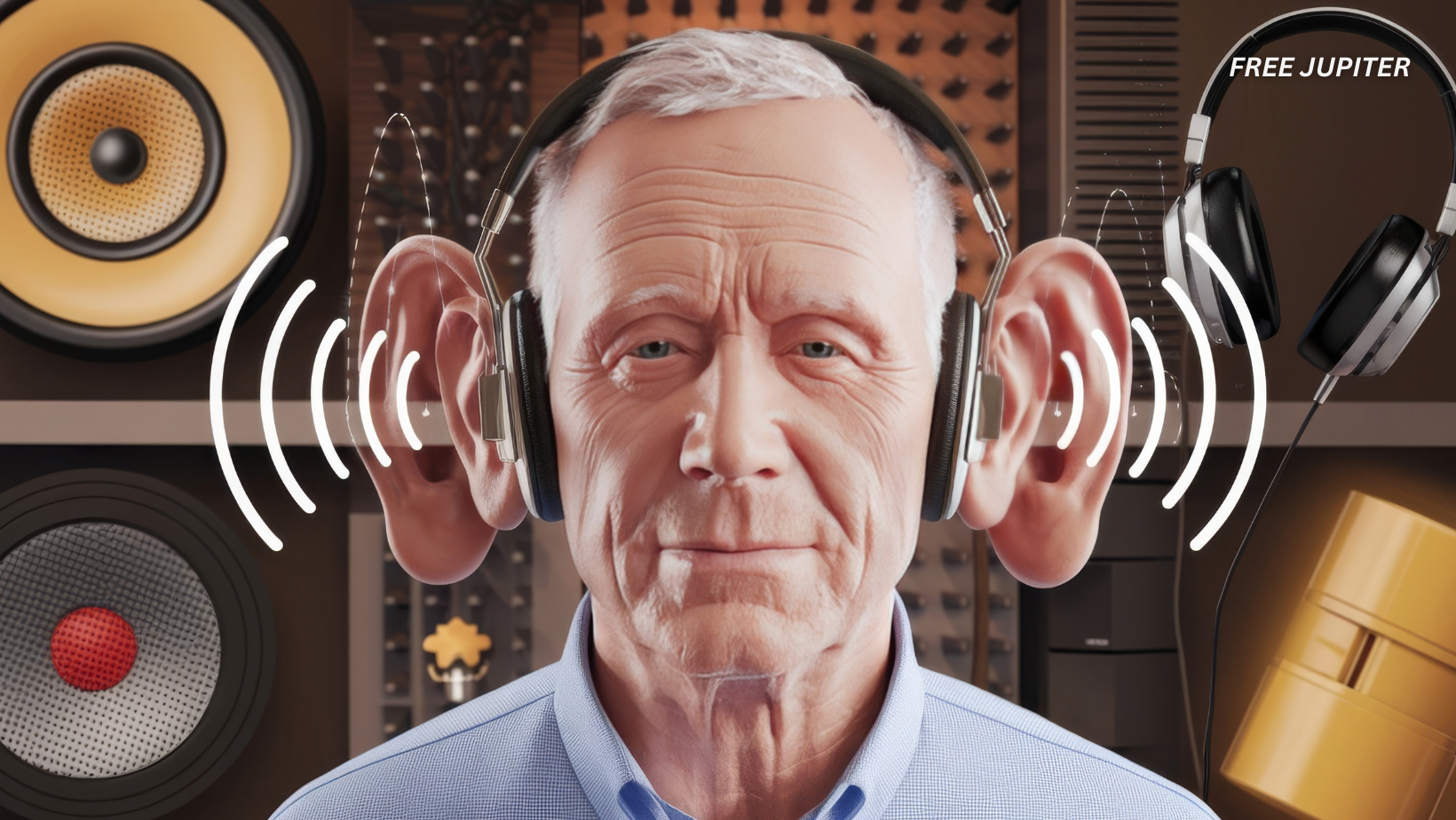Friendly Note: FreeJupiter.com shares general info for curious minds 🌟 Please fact-check all claims—and always check health matters with a professional 💙
For years, the complexities of human hearing have intrigued researchers. One particularly fascinating area of study is how individuals perceive sound in noisy environments. A study conducted a decade ago opened a window into this phenomenon, suggesting that some people possess a heightened ability to discern sounds amidst background noise, contingent on the nature of the surrounding auditory environment. However, the initial study was limited by a small sample size of only five participants, each engaged in a demanding five-hour task.
Expanding the Scope: A Collaborative Investigation
Peelle, a distinguished professor specializing in communication sciences and disorders, sought to expand upon this foundational research and gain deeper insights into how listeners process speech in the presence of noise. Peelle remarked, “This constitutes a fundamental aspect of auditory perception and our interaction with the world,” emphasizing the significance of understanding how individuals navigate the complexities of noisy environments. He further noted, “The influence of background noise on perception is captivating, intertwining with broader concepts of auditory processing and speech comprehension.”
Following the publication of the original study, other researchers shared Peelle’s enthusiasm and sought to replicate and extend its findings. However, many encountered difficulties in replicating the original results. Recognizing the need for a collaborative effort to address the challenges of replication, Peelle and his team extended an invitation to research teams worldwide to participate in a comprehensive investigation. Moreover, they meticulously reviewed the original paper, consulting with the original research team to ensure a thorough understanding of the study’s methodology and nuances.
“We obtained their auditory stimuli and code to comprehensively understand their procedures and identify any potential discrepancies,” Peelle explained. “Once we were confident in our methodology, we extended an invitation to other laboratories to participate, enabling us to conduct a more thorough investigation. Ultimately, we identified factors contributing to our inability to replicate the original study, while also validating its core findings. However, overcoming these obstacles required considerable effort.”
Unveiling the Methodology: A Series of Auditory Tests
The expanded study involved participants completing a series of auditory tests over five sessions. During these sessions, participants listened to sequences of noises that gradually increased or decreased in volume, as Peelle elucidated. Subsequently, the noise reached a constant volume, followed by the presentation of a beep. Participants were instructed to indicate when they detected the beep, which occurred randomly in half of the trials.
The primary objective of the tests was to determine the threshold at which individuals could begin to distinguish specific sounds and derive meaning from them. To ensure the fidelity of the replication, the original study authors generously shared their code and data, including details such as the specific buttons participants were required to press.
Read more: Physicists Finally Capture ‘Second Sound’ For The First Time – After Almost 100 Years Of Searching
Relating to Real-World Scenarios: The Coffee Shop Analogy
Peelle offered an intuitive analogy to illustrate the relevance of the study to everyday experiences: “Imagine being in a bustling coffee shop, struggling to hear a conversation partner. Some of their words may be easier to discern than others.” He continued, “Our study presents a simplified version of this scenario, focusing on the detection of a beep amidst noise. By deepening our understanding of how the brain processes such basic auditory information, we can gain valuable insights into how we engage in conversations in complex environments like coffee shops.”
Validating and Expanding Upon Previous Findings
The expanded study corroborated the original findings, confirming that an individual’s ability to perceive sounds is indeed influenced by preceding auditory stimuli. Moreover, the study revealed individual differences in this effect, with some individuals exhibiting greater sensitivity than others.
“The variability in this effect among individuals holds promise for its potential application as a clinical diagnostic tool,” Peelle noted. “We have established that this effect varies significantly across individuals, with some showing minimal response.”
Delving Deeper: Understanding Auditory Perception in Noise
The ability to hear and understand speech in noisy environments is a fundamental aspect of human communication. From crowded restaurants to bustling city streets, we constantly encounter situations where we must filter out background noise to focus on the sounds we want to hear. Understanding the mechanisms that underlie this ability is crucial for developing effective strategies to improve communication for individuals with hearing impairments and for optimizing the design of hearing aids and other assistive devices.
Read more: Scientists Create Sound That Can Curve Through Crowd To Reach Just One Person
The Cocktail Party Effect: A Classic Example
The “cocktail party effect” is a well-known phenomenon that illustrates the brain’s remarkable ability to selectively attend to one sound source while filtering out others. In a crowded room filled with conversations, we can typically focus on the person we are talking to while ignoring the surrounding chatter. This ability relies on a complex interplay of auditory and cognitive processes, including:
- Auditory Stream Segregation: The brain separates the incoming sound waves into distinct auditory streams, each corresponding to a different sound source. This process is based on acoustic cues such as frequency, timing, and spatial location.
- Selective Attention: Once the auditory streams have been segregated, we can selectively attend to the stream of interest, suppressing the processing of other streams. This attentional filtering is thought to involve both bottom-up (stimulus-driven) and top-down (goal-directed) mechanisms.
- Cognitive Processing: The selected auditory stream is then subjected to further cognitive processing, including speech perception, language comprehension, and memory encoding.
Factors Influencing Auditory Perception in Noise
Several factors can influence an individual’s ability to hear and understand speech in noisy environments. These include:
- Hearing Acuity: Individuals with hearing loss typically have greater difficulty understanding speech in noise than individuals with normal hearing. This is because hearing loss reduces the clarity of the incoming sound signal, making it more difficult to separate speech from background noise.
- Age: Older adults often experience age-related changes in auditory processing that can impair their ability to understand speech in noise. These changes may include a decline in auditory temporal resolution, reduced working memory capacity, and decreased cognitive flexibility.
- Cognitive Abilities: Cognitive abilities such as attention, working memory, and executive function play a crucial role in auditory perception in noise. Individuals with stronger cognitive abilities are better able to filter out distractions, maintain focus, and process information efficiently.
- Language Proficiency: An individual’s proficiency in the language being spoken can also affect their ability to understand speech in noise. Non-native speakers may have greater difficulty understanding speech in noise because they have to expend more cognitive resources on decoding the linguistic content of the message.
- Acoustic Environment: The acoustic characteristics of the environment, such as the level and type of background noise, the reverberation time, and the distance between the speaker and listener, can significantly impact speech intelligibility.
Strategies for Improving Auditory Perception in Noise
Several strategies can be employed to improve auditory perception in noise. These include:
- Hearing Aids: Hearing aids can amplify the sound signal and improve the clarity of speech for individuals with hearing loss. Modern hearing aids also incorporate advanced noise reduction algorithms that can selectively suppress background noise while preserving the clarity of speech.
- Assistive Listening Devices: Assistive listening devices (ALDs) are designed to improve communication in specific situations, such as classrooms, theaters, and places of worship. ALDs typically use a microphone to capture the speaker’s voice and transmit it directly to the listener’s ear, bypassing the ambient noise.
- Communication Strategies: Employing effective communication strategies can also improve speech understanding in noise. These strategies include:
- Requesting Repetition: Asking the speaker to repeat or rephrase what they said can help clarify ambiguous or misunderstood information.
- Moving Closer: Reducing the distance between the speaker and listener can improve the signal-to-noise ratio and enhance speech intelligibility.
- Minimizing Distractions: Reducing visual and auditory distractions can help improve focus and attention.
- Choosing a Quiet Environment: Whenever possible, selecting a quieter environment for conversation can significantly improve speech understanding.
- Cognitive Training: Cognitive training programs designed to improve attention, working memory, and executive function may also enhance auditory perception in noise. These programs typically involve engaging in mentally challenging tasks that require sustained attention, working memory, and cognitive flexibility.
Read more: The ‘Sound Of Silence’ Performed By Willie Nelson’s Son Will Leave You Absolutely Speechless
Future Directions in Research
Future research in auditory perception in noise will likely focus on:
- Developing more sophisticated noise reduction algorithms for hearing aids and ALDs.
- Investigating the neural mechanisms underlying auditory stream segregation and selective attention.
- Exploring the impact of cognitive training on auditory perception in noise.
- Developing personalized interventions to improve communication for individuals with hearing impairments.
- Examining the effects of noise exposure on auditory and cognitive function.
By continuing to unravel the complexities of auditory perception in noise, we can develop more effective strategies to improve communication and quality of life for individuals of all ages and hearing abilities. As AI continues to advance, there is a growing opportunity to incorporate AI-powered solutions to enhance auditory perception in noisy environments. This could involve AI-driven noise cancellation, personalized audio processing, and real-time speech enhancement.
The collaborative study led by Peelle exemplifies the power of scientific collaboration in addressing complex research questions. By bringing together researchers from diverse backgrounds and perspectives, we can accelerate the pace of discovery and develop more comprehensive and impactful solutions to the challenges of auditory perception in noise. The insights gained from this research have the potential to transform the lives of millions of people worldwide who struggle to hear and understand speech in noisy environments.
Disclaimer: The information in this article is for general informational purposes only and is not medical advice. We are not doctors, and this website is run as a family hobby project. Always consult a qualified healthcare professional before making decisions about your health. Please fact-check any claims and use this content as a starting point, not a substitute for professional guidance.










